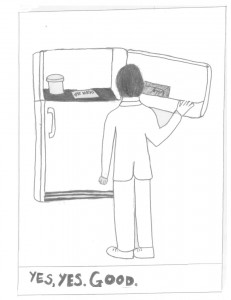
The Player
Patrick Ewing was a standout in his four years for the Georgetown Hoyas. He brought his team to the NCAA Championship game three out of the four years he played, winning in one of those appearances.
At seven feet tall, Ewing was a force to be reckoned with, one of the most terrifyingly good college players in history. Ewing won the Naismith College Player of the Year and the Adolph Rupp Trophy in 1985, and was the NCAA Basketball Tournament Most Outstanding Player in 1984.
Without a doubt, Patrick Ewing would be the first overall pick of the NBA Draft in 1985. However, since the NBA utilizes a different system for selecting the draft positions than the MLB and NFL (1985 would be the first year of the draft lottery), Ewing was up for grabs, and whoever came out with the number one pick in the lottery would select him.
The Team
In the NBA 1984-85 season, the New York Knicks finished dead last in their division, and second to last in the conference. They had one of the league’s best scorers in Bernard King, who led the league in points per game and was on the All-NBA first team.
So with a few more strong players, the Knicks would be good again, hopefully. They’d need to make some trades, pick up a few solid free agents, and of course, get one or two great draft picks, but how would they make sure that they received a top pick?
The System
The NBA was implementing a new draft pick selection system in 1985. Before, they had just gone in order from the worst to the best record to determine which team would receive each pick. However, the league came to the conclusion that down the stretch, if a team realized it was out of playoff contention, that they may just throw games to put themselves in a good position to get a top pick. This time, they’d be selecting the first seven picks “randomly” among the seven worst records in the league.
The Knicks had the third worst record in the NBA, with the Indiana Pacers and Golden State Warriors tied for the cellar.
The Conspiracy
The Knicks were a disappointment, to say the least, for multiple reasons. Even with a big star player, they were unable to even finish with a winning record. Not only that, but they sat in the biggest market of any team in the league, New York. Interest was down in a huge city, and that’s something that the league does not want, especially from the biggest city in the country.
So, with this new system for draft selection, would commissioner David Stern make an attempt to give the biggest market in the league the nation’s best incoming player?
The Theories
There are two theories that are pretty well-known, one of which ESPN’s Bill Simmons finds very convincing, and the other, I believe is a bit more plausible just because Simmons’ is incredibly intricate and it very much could have happened by chance.
Simmons’ theory is associated with what he calls a “Zapruder film” of the draft lottery. He claims that when the hired accountant places the envelopes of each team into the glass drum, he bangs one of the envelopes against the side, which leaves a folded corner on the envelope, making it apparent to Commissioner Stern that this was the Knick’s envelope.
What I find hard to believe about this is that if you watch the video, which can be found on YouTube, Stern doesn’t take all that long to pick an envelope. He doesn’t noticeably examine or really look to see which envelope has the crease, which he ended up selecting, maybe (probably) out of pure coincidence.
However, there is another theory that I find much more believable, and actually possible. Theorists have suggested that the Knicks’ envelope was left in a freezer before the lottery in order to make it easy for Stern to be able to tell which envelope was New York’s.
Ok, so maybe it’s a little out there, but it totally could have happened. I tested it myself by taking seven envelopes, one of which was frozen, and put them into a bowl. Of course, it was very easy to tell which one was the coldest.
And, I mean, come on, let’s be real. David Stern has always secretly been a Knicks fan, he was born in New York City and lived in New Jersey close by.
Case closed. David Stern wanted the best player to end up in New York so they could have a successful team in the biggest market in the league.
Too bad the Knicks sucked so much they still didn’t make the playoffs for another four years after getting Patrick Ewing.












































